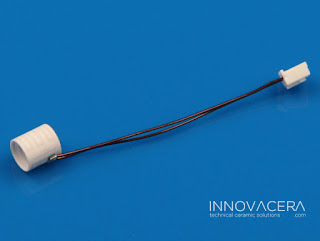BAB259 Laser Reflector
BAB259 Ceramic cavity reflectors work particularly well in Ruby and Nd:YAG laser pumping chambers and can be a highly cost effective alternative to metal coated reflectors. They are also used extensively as reflectors in housings for high intensity lamps. - Resist chemical attack - high strength - high reflectivity over a broad wavelength band - good thermal conductivity and electrical stability at all operating temperatures. Physical Characteristics: - Color: White - Density: 3.1Mg/m^3 - Porosity: 22% - Flexural strength: 170Mpa - Coefficient of thermal expansion: 7.9×10^-6--/С (200~500℃) 9×10^-6/С (200~1000℃) Part No.: BAB259 Dimension: OD23.5mm * 64mm


.jpg)